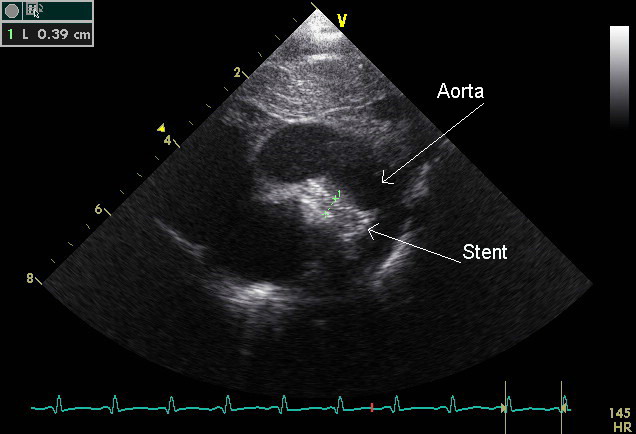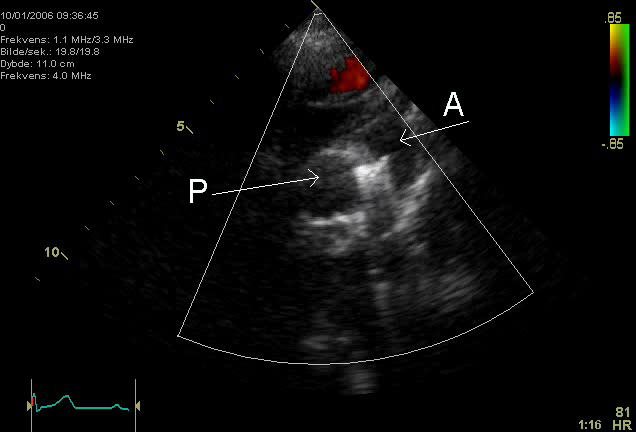Congenital rubella syndrome echocardiography or ultrasound
|
Congenital Rubella Syndrome Microchapters |
|
Differentiating Congenital Rubella Syndrome from other Diseases |
|
Diagnosis |
|
Treatment |
|
Case Studies |
|
Congenital rubella syndrome echocardiography or ultrasound On the Web |
|
American Roentgen Ray Society Images of Congenital rubella syndrome echocardiography or ultrasound |
|
FDA on Congenital rubella syndrome echocardiography or ultrasound |
|
CDC on Congenital rubella syndrome echocardiography or ultrasound |
|
Congenital rubella syndrome echocardiography or ultrasound in the news |
|
Blogs on Congenital rubella syndrome echocardiography or ultrasound |
|
Directions to Hospitals Treating Congenital rubella syndrome |
|
Risk calculators and risk factors for Congenital rubella syndrome echocardiography or ultrasound |
Editor-In-Chief: C. Michael Gibson, M.S., M.D. [1]; Associate Editor(s)-in-Chief: Dima Nimri, M.D. [2]
Overview
On echocardiography, the several cardiac anomalies associated with congenital rubella syndrome may be observed. These include patent ductus arteriosus, pulmonary artery stenosis, coarctation of the aorta, as well as septal defects (VSD or ASD).[1][2] Prenatal ultrasound, although not sensitive, is highly specific in detecting the various anomalies associated with congenital rubella syndrome. Findings such as IUGR, cardiac and ophthalmic defects, fetal hydrops, and microcephaly may be observed on ultrasound.[3][4][5]
Echocardiography
The several cardiac anomalies, which are associated with congenital rubella syndrome, can be observed on echocardiography. These include:[1][2]
- Patent ductus arteriosus (PDA) (most common)
Shown below is an echocardiogram of a stented persisting ductus arteriosus. One can see the aortic arch and the stent leaving.

Below is an echocardiogram of a coiled persisting ductus arteriosus. The aortic arch, the pulmonary artery and the coil are observable.

Ultrasound
Not all fetuses infected with rubella virus in the prenatal period present visible signs on ultrasound consistent with congenital rubella syndrome. However, positive findings on ultrasound provide certainty to the diagnosis, with specificity of prenatal ultrasound reaching ~100%.[6] Such findings include:[3][4][5]
- Cardiac defects
- Ophthalmic defects
- Microcephaly
- Hepatosplenomegaly
- Fetal hydrops
- Bowel hyperechogenicity
- Intrauterine growth retardation (IUGR)
References
- ↑ 1.0 1.1 Bullens D, Smets K, Vanhaesebrouck P (2000). "Congenital rubella syndrome after maternal reinfection". Clin Pediatr (Phila). 39 (2): 113–6. PMID 10696549.
- ↑ 2.0 2.1 Oster ME, Riehle-Colarusso T, Correa A (2010). "An update on cardiovascular malformations in congenital rubella syndrome". Birth Defects Res. Part A Clin. Mol. Teratol. 88 (1): 1–8. doi:10.1002/bdra.20621. PMID 19697432.
- ↑ 3.0 3.1 De Santis M, Cavaliere AF, Straface G, Caruso A (2006). "Rubella infection in pregnancy". Reprod. Toxicol. 21 (4): 390–8. doi:10.1016/j.reprotox.2005.01.014. PMID 16580940.
- ↑ 4.0 4.1 Bouthry E, Picone O, Hamdi G, Grangeot-Keros L, Ayoubi JM, Vauloup-Fellous C (2014). "Rubella and pregnancy: diagnosis, management and outcomes". Prenat. Diagn. 34 (13): 1246–53. doi:10.1002/pd.4467. PMID 25066688.
- ↑ 5.0 5.1 Cordier AG, Vauloup-Fellous C, Grangeot-Keros L, Pinet C, Benachi A, Ayoubi JM, Picone O (2012). "Pitfalls in the diagnosis of congenital rubella syndrome in the first trimester of pregnancy". Prenat. Diagn. 32 (5): 496–7. doi:10.1002/pd.2943. PMID 22495555.
- ↑ Migliucci A, Di Fraja D, Sarno L, Acampora E, Mazzarelli LL, Quaglia F, Mallia Milanes G, Buffolano W, Napolitano R, Simioli S, Maruotti GM, Martinelli P (2011). "Prenatal diagnosis of congenital rubella infection and ultrasonography: a preliminary study". Minerva Ginecol. 63 (6): 485–9. PMID 22036752.